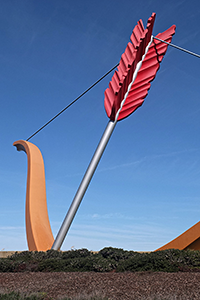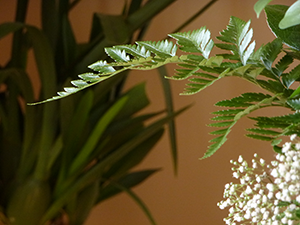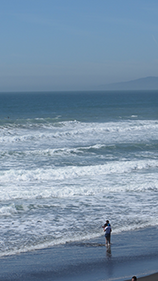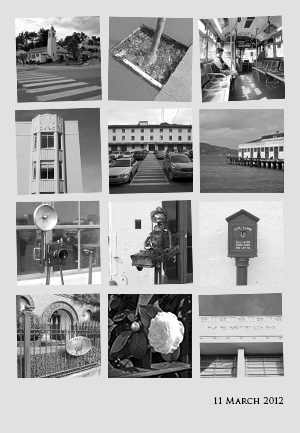Photo Corners headlinesarchivemikepasini.com
![]()
A S C R A P B O O K O F S O L U T I O N S F O R T H E P H O T O G R A P H E R
![]()
Reviews of photography products that enhance the enjoyment of taking pictures. Published frequently but irregularly.
Playing With Aspect Ratios


20 February 2013
If you caught our slide show earlier this month, you may have wondered why all the images were square. It's a long story. A personal odyssey, if you will. An adventure in composition, at least.

Old School. 35mm film gave us 3:2 and it stuck around.
The rules were set down long before we learned to walk around them. The 35mm movie frame that was adopted for still use in the 1930s measures one and a half inches by one inch. That's the 3:2 aspect ratio every dSLR uses (except when it's shooting movies). And it enlarges perfectly to fit a 4x6 (ahem, 6x4) jumbo print.
So when we began shooting stills, we shot 3:2, holding the camera in either a landscape or, more commonly in our case, a portrait orientation. In fact, one of our earliest lessons in composition was simply to remember to shoot portrait once in a while.
We did find ourselves behind a view camera now and then, shooting 4x5 film. And we had the odd 120mm film experience on a medium format back, too. But these were special occasions and always dictated by the camera.
We indulged in 4:3 (which happens to be the aspect ratio of standard definition television, too) when we started shooting with digicams but we didn't really shoot much other than 3:2 until we acquired an HD TV several years ago.

Digicam. Digicams and standard definition TV like 4:3.
By then we weren't making many prints as we started capturing dozens of images every time we took a few. That sort of volume quickly led us to abandoned all hope of making two sets of jumbo prints for any shoot. We enjoyed arrowing through them on our monitor but we had a problem sharing that experience with anyone else.
We started finding ways to display our most recent outings on the TV, which was by far the best digital photo frame we'd ever used. An Apple TV made that more convenient than it had ever been before.
So we started shooting 16:9, the aspect ratio of an HDTV, compliments of the small digicams with varied aspect ratios that we were reviewing at the time.

Widescreen. Just lovely on an HDTV.
Except, you know, there's a little problem with shooting 16:9.
While our landscape-oriented shots were just gorgeous on the HDTV, our portrait-oriented shots (among our favorite compositions, actually, probably because San Francisco is hilly and on the coast) were slivers on the big screen.

Widescreen. But vertical images shrink when shown full crop on an HDTV.
It hardly seemed fair.
Any asymmetrical aspect ratio would present the same problem on an HDTV. And HDTV wasn't the only way we looked at our images, anyway.
So this wasn't really a problem to be solved. It was an artistic choice to be explored.
The one thing we hadn't tried was shooting 1:1, a square format. One day we attended a show featuring some medium format shots taken by Arthur Tress in the 1960s. All square black and whites.
The show inspired us to shoot just that way on a walk around the Marina a few days later. When we got back to the bunker, we picked a dozen images from the shoot and laid them out in a 13x9 composition in what we called a photo Bento box. We really liked what we ended up with. It told a story.
So we kept shooting 1:1. Black and white.
But we hedged our bets a bit by shooting JPEG+Raw, so we had the full frame image hidden away in the Raw file (with color). The discipline was in framing the 1:1 shot and thinking in black and white on location. Which, as it happens, treats everything the same on HDTV.

Bento Box. A grid of 1:1 images on a 13x19 sheet tell a story.
Great fun, in short.
One of the funnier aspects of this, though, is our impulse to turn the camera from landscape to portrait even when we're shooting 1:1. The scene doesn't crop any differently, but we sense the subject is tall or wide and try to optimize our framing anyway.
Old habits die hard.
But it isn't entirely antiquated. Sometimes shooting on the diagonal does the trick very nicely. You don't have to remain square when you shoot 1:1.
The pity of this composition fun is that the dSLR (or the smartphone) doesn't much accommodate it. Sure, it drops into 16:9 when you start shooting HD movies (and 4:3 for SD movies) but you can forget 4:3 and 1:1.
Fortunately, the smaller mirrorless cameras have inherited the wide range of digicam aspect ratio choices. You can often find them hidden away in the menu system, although we really applaud Panasonic's digicam habit of putting them on a physical switch right on the lens barrel.

Diagonal. Cutting across the frame.
This is certainly something to think about.
When you're in the field shooting, the camera frames the scene differently than your eyes presented it. A 16:9 aspect ratio exaggerates the height or length of the subject while a 1:1 crop discounts any one dimension significantly, emphasizing some other quality in the scene.
But even if your camera isn't adroit enough to shoot in more than one aspect ratio, you can do this in post production. Much as we used to do with the blades of a Saunders easel, we might add. Just crop the image.
We had a lot of fun massaging those Friday slide show images. What should be straight? Where's the middle of the frame? What about that rule of thirds when it comes to a 1:1 aspect ratio?
Those are questions that animate our editing and add a little life to the show, too.
Comments
I use Nikon. The only camera that I own that does a square is the P7000 and that only in JPEG mode. At least if I want to see how it would look I can go to crop mode to do it. My other cameras are the Nikon D600 and V1. I wish they would shoot a square Raw image but I guess I will need to go to another camera maker to get that. I love the square black and white look.
-- Steven Lawrence